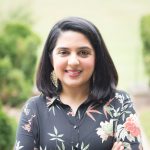
Asma T. Uddin is a Senior Scholar at the Freedom Forum Institute and a 2019 Visiting Scholar at Brigham Young University.
A few years ago, the New York Police Department (NYPD) spied on a wide range of Muslims within a 250-mile radius of New York City, without any probable cause or reasonable suspicion of illegal activity. Leaked NYPD reports plus a series of Pulitzer Prize–winning articles published in 2011 by the Associated Press, revealed how it all worked: the NYPD used census information and government databases to map ethnic neighborhoods in New York, New Jersey, Connecticut, and Pennsylvania. The maps at times included groups other than Muslims (for example, Syrian Jews and Egyptian Christians), but the NYPD spied only the Muslims in those neighborhoods.
Undercover agents would infiltrate mosques and religious schools. These agents would sit among the Muslims and listen in on their conversations, sometimes engaging them in conversations of their own, all for the purpose of assessing their religious and political views and reporting them back to the NYPD. Inside the mosques, the agents would record the imam’s sermons and statements by congregants.
The infiltration did not stop there. The NYPD also mounted cameras on light poles outside mosques and aimed the camera at the mosques. Police officers would control the cameras remotely from their computers so that they could collect the congregants’ license plate numbers and generate footage of everyone entering and leaving the mosque. The NYPD also spied on Muslim religious schools and Muslim student organizations.
And these officers did not just spy and record. They also baited, using a tactic called “create and capture” to start conversations about jihad or terrorism in order to “bait” people into making inflammatory statements, which the agents would then record and report back to the NYPD. What’s more: the officers would target individuals based on their appearance and presumed level of religiosity: women in headscarves and men who had grown beards in accordance with Islamic tradition.
Everything about this NYPD program flies in the face of what governments are supposed to do when navigating the relationship between security and freedom of religion or belief (FoRB).
The recently released policy guidance from OSCE’s Office of Democratic Institutions and Human Rights (OSCE/ODIHR) examines a few categories of restrictions by OSCE participating States. The NYPD fact pattern includes several of those categories:
- Restrictions on “radical,” “extremist” speech and literature
Some States consider particular speech by religious leaders to be “radical” or extremist” and indicative of a security threat. The concern sometimes extends to sacred texts or other religious literature that contain, for example, religious absolutist and superiority claims. To guard against the presumed threat, these States enact measures that censor or criminalize the speech in question and prohibit its dissemination. Sometimes these States will even appoint government “experts” to review the literature or speech and determine whether it advocates “extremism.” The NYPD program, for its part, recorded statements with particular words and messages, in some cases baiting a person into making those statements, all as a way of connecting speech to the possibility of violence and further justifying its surveillance of that individual.
- Screening, monitoring and searching places of worship and meeting places
Some States monitor places of worship or religious gathering for fear that these places are breeding grounds for radicalization. These States will screen those who enter and leave places of worship, question some of the attendees (usually young men) and monitor activities. The NYPD surveillance program included precisely these forms of screening.
- Religious dress, symbols, articles
Some States also worry that particular forms of religious dress or symbolism pose a threat to security. Because of this fear, some governments have enacted religious garb bans—such as the infamous burka ban first seen in France and now sweeping Europe. But as the NYPD scenario demonstrates, the restrictions come in less obvious ways, too. In that case, a woman in a headscarf was more likely to be spied on than a woman not wearing a headscarf; the religious garb was perceived as a symbol or indication of a security threat.
These blatant violations of FoRB demonstrate that wide incursions on liberty are entirely possible, even in States with otherwise robust protections. This phenomenon is increasingly the case in a world racked with violence. Many of us spend our days with varying degrees of insecurity, unsure about what our tumultuous environment holds for us next. This perpetual sense of insecurity helps governments justify incursions into freedom.
Lost in the process is the fundamental understanding that religious freedom is in fact necessary for security—security and religious freedom are not in tension with one another but mutually reinforce each other. As the OSCE/ODIHR policy guidance makes clear, charting a path forward requires a recognition of this symbiosis between freedom and security: “Finding long-term solutions in this area requires a collaborative approach involving the state and all other relevant stakeholders,” including religious communities. “By inspiring a positive vision of collective human existence and the common good, they can further ongoing society-wide efforts to strengthen social cohesion and comprehensive and sustainable security.”
The NYPD story bears out this point, too, in its relatively “happy ending.” In 2018, after victims of its surveillance program sued the City of New York, the City agreed to reform its practices, no longer engage in “suspicionless surveillance on the basis of religion or ethnicity,” and give plaintiffs the opportunity to provide feedback on the NYPD’s “first-ever Policy Guide, which will govern the Intelligence Bureau’s activities, and to publish the Guide to the public.” The NYPD now also has a Muslim Officers Society, which has increased police recruitment among Muslims from a handful in 2001 to more than 1,000 today. In the end, a collaborative approach to the common good prevailed—with the OSCE/ODIHR policy guidance states will hopefully start with this same vision.
